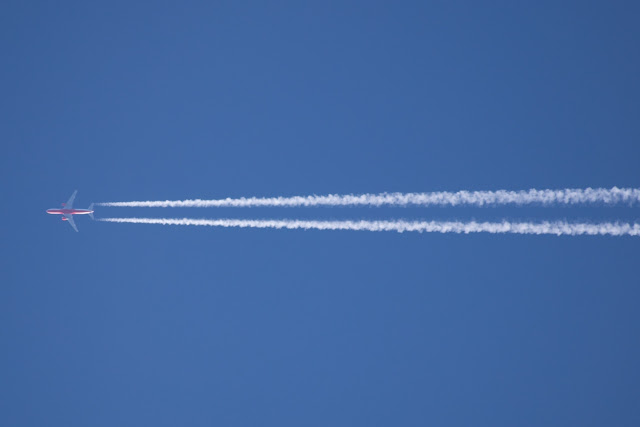 |
| Image credit: El Ronzo, Flickr |
The proliferation of aviation has brought about huge benefits to our society, enhancing global economic prosperity and allowing humanity to travel faster, further and more frequently than ever before. However, the relentless expansion of the industry is a major detriment to the environment on a local, regional and global level. This is due to the vast amounts of pollution produced from the jet fuel combustion process, that is required to propel aircraft through the air and to sustain steady level flight.
Aircraft impact the climate largely through the release of CO2, which results in a direct contribution to the greenhouse effect, absorbing terrestrial radiation and trapping heat within the atmosphere, leading to rising temperatures. However, it is also vital not to overlook the non-CO2 aircraft emissions such as NOx, soot and water vapour, which result in alternative climate change mechanisms – the indirect greenhouse effect, the direct aerosol effect and aviation induced cloudiness. When accounting for these non-CO2 effects, it can be assumed that the climate impact is doubled or tripled compared to that of CO2 alone.
This report provides the necessary background information to grasp the science behind aircraft emissions and delves into the impacts aviation has on the atmosphere’s ability to cleanse itself of harmful emissions, otherwise known as the oxidising capacity of the atmosphere. It does so through an analysis of three distinct and commonly flown flight routes, investigating the impact that each flight’s emissions have on the surrounding atmospheric chemistry and discusses the potential effects this has on our Earth-atmosphere system.
Read the full report by Kieran Tait
——————————
Read our other blogs about air travel:
- To fly or not to fly? Towards a University of Bristol approach
- I won’t fly to your conference, but I hope you will still invite me to participate
